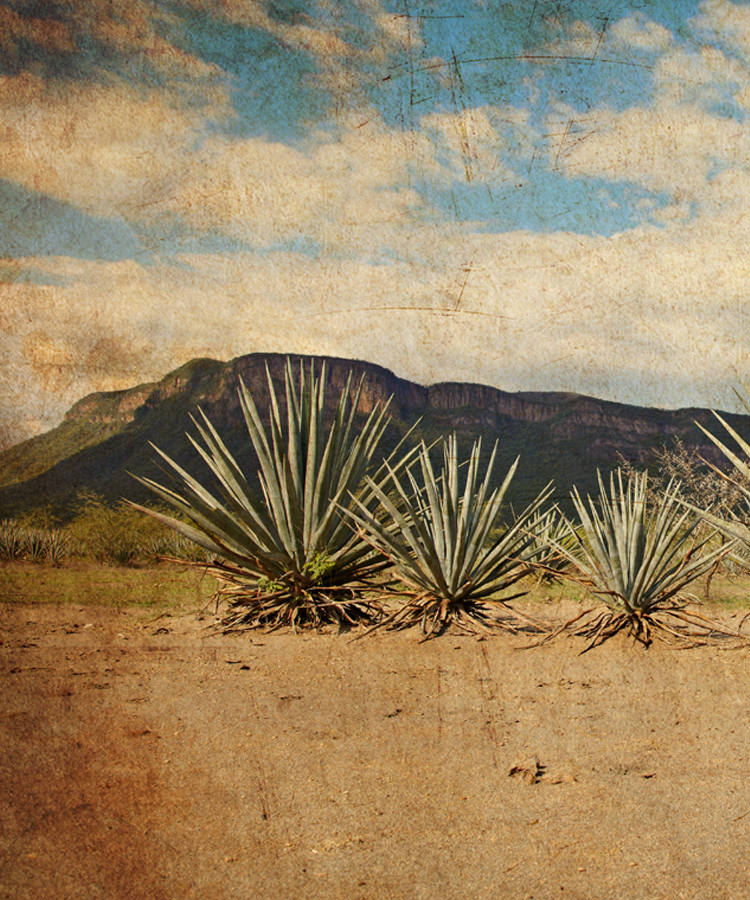Agave is a magical plant. With over 200 known species, many of which can be made into myriad byproducts, it is a diverse, multifaceted entity. Perhaps the best-known (and most loved) uses for agave are tequila and mezcal.
Whether sipped neat or served in a Margarita, tequila is one of America’s favorite spirits — and it’s on the rise. Last year, tequila consumption grew 7.4 percent.
Mezcal is relatively new to the States, but it is picking up steam as unique bottles with innovative flavors and strong tradition are increasingly available. Both are staples for any good bar or beverage program.
The basics
To fully appreciate both spirits, you first have to understand the agave plant.
Indigenous to Mexico and the southern United States, agave thrives in arid desert environments. But don’t assume it’s part of the cactus family just because they share a homeland. Agave is actually in the same family as asparagus.
Several agave species are used for landscaping, and less than half have enough natural sugars to be distilled into tequila or mezcal. All agave, however, has spiky leaves that jut out from a central section of the plant called the piña. The plants generally live for around 15 to 30 years, and mature after seven to 25 years. At the end of the plant’s life, a tall stalk grows straight up out of its center.
Agave is a major part of the desert ecosystem, as well as a key to understanding the environment as a whole. A threatened species called the lesser long-nosed bat depends on flowering agave to survive, and agave’s genetic makeup could help scientists grow more drought-resistant plants.
“Every agave is different,” Antonio Rodriguez, the director of production at Patrón, tells me. “Their composition, and thus the amount of sugar and flavor developed by the terroir, are all huge differentiators between tequila and mezcal-making processes.”
Agave for tequila
By law tequila must be made with Tequilana Weber or Blue Weber agave in the Mexican states of Jalisco, Nayarit, Tamaulipas, Michoacan, and Guanajuato. To qualify as tequila the resulting spirit requires at least 50 percent agave, but the best tequilas are made with 100 percent agave.
“The Weber Blue agave was selected to be the go-to agave for tequila because of its higher sugar concentration compared to other agave plants,” Rodriguez says, “as well as its reproduction method, life cycle, and strength of the plant.”
Blue Weber, at its most basic, has herbal spice notes and citrus. But additional flavors are drawn out through the “tahona” method that brands like Patrón and Olmeca use for some of their products. This process entails crushing the agave with a stone wheel, and it can add sweet flavors similar to sweet potatoes, Rodriguez says.
When aged in barrels, the tequila picks up a variety of flavors. American oak lends notes of vanilla and caramel, French oak imparts dry fruits, and Hungarian oak can leave citrus and fresh wood flavors on the spirit.
According to a 2017 Drinks International ranking, the top-selling tequila labels are Don Julio, Calle 23, Ocho, Tapatio, and Patrón.
Agave for mezcal
Made in Mexico for at least 400 years, mezcal is a homespun affair primarily produced by small families and villages. The name comes from the Nahuatl words “metl,” which means agave, and “ixcalli,” which means cooked or baked.
Certification for mezcal is currently in flux. One helpful thing to remember is that tequila is a type of mezcal, but mezcal is not a type of tequila. At the time of this writing, mezcal can only be produced in eight states. Most mezcal is made from espadin agave grown in the state of Oaxaca. The agave is harvested when it’s close to reproduction, when “its energy stores are the greatest” and the piña is the most ripe, according to Richard Betts, the founder of Sombra Mezcal.
Traditional methods include one or more of the dozens of types of wild agave allowed for mezcal production (the website MezcalPhD lists more than 30 types of agave plants known to be used in mezcal). The plants are roasted in the ground under stone and dirt, and then fermented agave juice is distilled in wood-burning clay pots or copper stills.
Which type of agave a producer uses largely depends on the area in which it’s made, Danny Mena, the co-founder of Mezcales de Leyenda, says.
“For example, in Michoacán, our producer Guadalupe grows Americana, Inaquidens, and Cupreata extremely well,” Mena says. “Each of these agaves have their own qualities. The only real thing that you are looking for in an agave is to have enough sugars to be able to ferment.”
The varying types of agave as well as the terroir of the region it’s grown and distilled in means there’s not a hard and fast set of flavors in mezcal. In the U.S., where the majority of mezcal bottles are made from espadín, consumers can expect a sweet nose with a long, sweet flavors. Espadín also absorbs smoke more in the distilling process, Mena says, giving it more of a charred aspect.
Like tequila, mezcal easily picks up barrel flavors when aged.
Large and international liquor brands started seriously getting into the mezcal business for the first time in 2017, as seen by Pernod Ricard’s purchase of Del Maguey.
